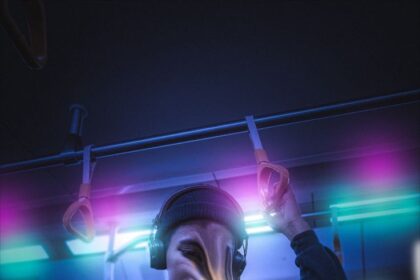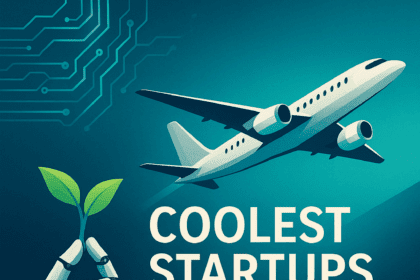In an era where short-form video dominates social engagement, TikTok presents both a challenge and opportunity for brands seeking global reach. Some have merely dipped their toes; others have cracked the code, building authentic presence, consistent growth and tangible business impact. In this article, we examine how top brands – from language apps to beauty lines to luxury houses – succeeded on TikTok. We’ll unpack the key strategies, illustrate with real case studies and offer actionable lessons for marketers and entrepreneurs.
We’ll also explore how creator relationships, content formula and cultural relevance drive success on the platform.
What “Cracking TikTok” Means
To “crack” TikTok means more than posting a viral one-off video. It means:
- Consistently generating content that resonates with TikTok users and earns placement on the “For You” feed.
- Building an audience that engages not just with a brand message but with the brand’s identity as a “creator” in the conversation.
- Translating engagement into business outcomes – whether brand awareness, product sales or community loyalty.
- Leveraging the platform’s algorithmic dynamics (trending sounds, creator collaborations, vertical format) rather than forcing traditional ad formats.
Research shows that brands with high creator retention (i.e., working with the same creators over time) and authentic creator alignment perform much better. Brands that treat TikTok like “another Instagram feed” tend to struggle.
Case Study 1 – Duolingo: Absurdist Mascot Goes Viral
One of the most cited examples of brand success on TikTok is Duolingo. According to an overview of viral winners, Duolingo increased its monthly users from ~40 million in 2021 to over 100 million by Q2 2024. On TikTok itself: the account has millions of followers and videos garner hundreds of millions of views.
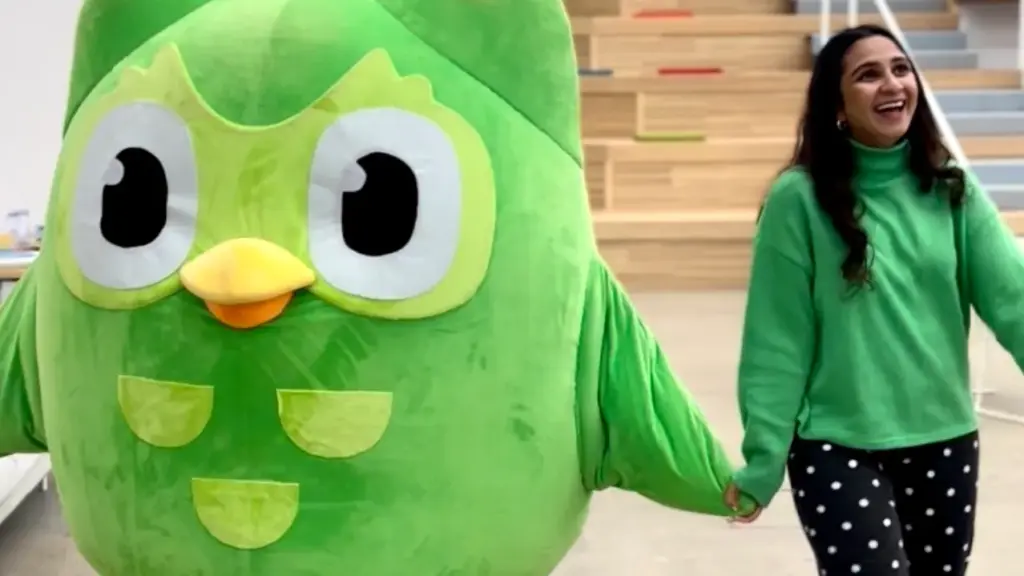
What they did right
- They adopted a wildly un-corporate personality for their mascot (“Duo the owl”) – comedic, irreverent, sometimes absurd – rather than a straight language-learning pitch.
- They used a content formula: ~60% pure entertainment (meme/trend-based), ~30% education disguised as fun, ~10% direct product/promotion.
- They leaned into culture: referencing celebrities, trending formats, and meta humour (“our mascot is mischievous”), thus making users feel like they’re in on the joke rather than being sold to.
Key outcomes & takeaway
By prioritising entertainment and audience first, product second, Duolingo built both awareness and affinity. The lesson: On TikTok you’re not just advertising, you’re becoming part of the culture.
For brands seeking to replicate this: shift your mindset from “ad campaign” to “creator-led story”.
Case Study 2 – Rare Beauty & Authentic User-Generated Content
In the beauty category, Rare Beauty demonstrates how authenticity and user-generated content (UGC) win on TikTok. According to one article, Rare Beauty embraced “imperfect” makeup tutorials, integrated mental-health messaging (via founder Selena Gomez), and tailored content to the vertical video format.
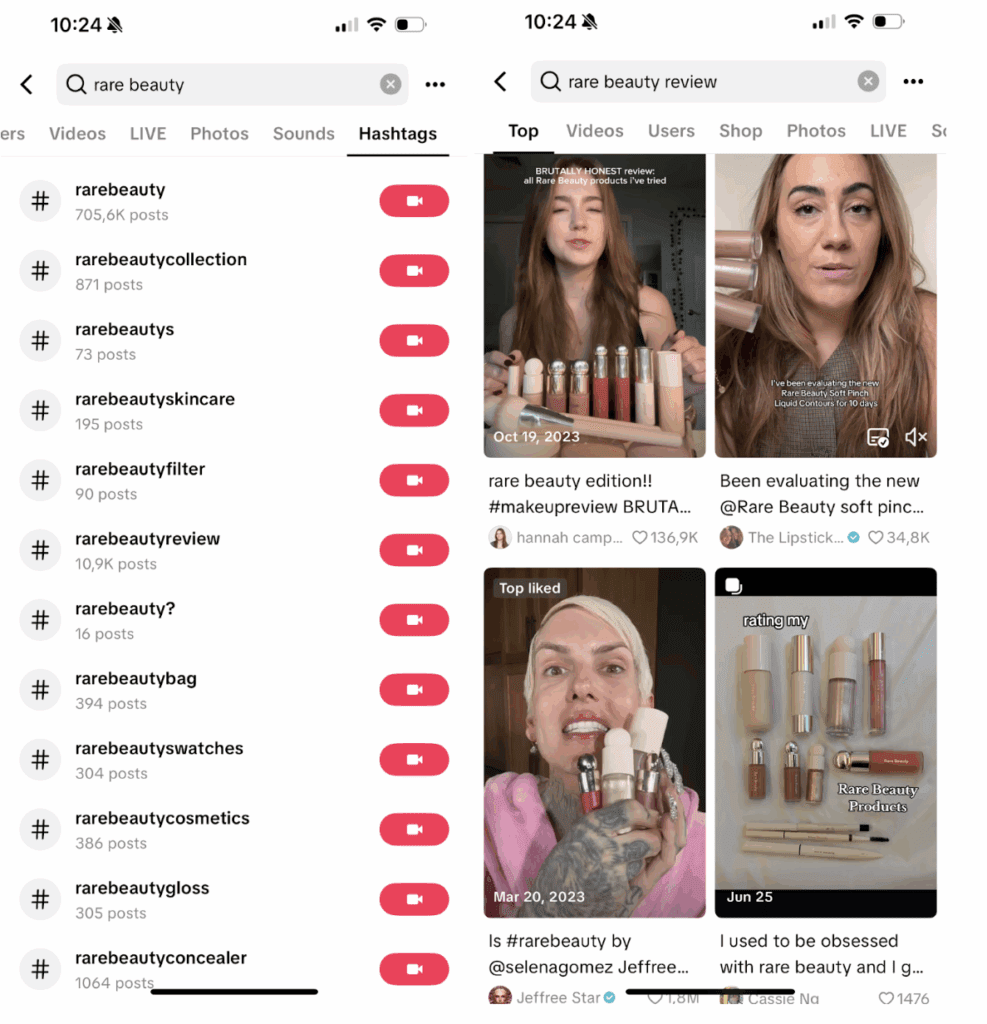
What they did right
- They allowed “real” creators and real customer videos to take centre-stage rather than fully polished brand studio content.
- They integrated founder authenticity – Selena Gomez didn’t just own the brand; she appeared in content and made the message personal.
- They made their products TikTok-friendly (visual, quick transformations, usable in 15-60 sec) and encouraged sharing of “before/after” or “my honest review” style content.
Key outcomes & takeaway
Rare Beauty’s strategy translated into one of the fastest-growing beauty brands on TikTok. The lesson: on TikTok, relatability beats perfection. Brands that allow imperfections, user voices and storytelling gain genuine traction. Engage creators who feel like “peers” not “ads”.
Case Study 3 – Gymshark & CeraVe: From Engagement to Commerce
In a deeper dive into TikTok Shop and commerce-driven success, one article highlights Gymshark (fitness apparel) and CeraVe (skincare) as brands that leveraged TikTok effectively for sales, not just awareness.
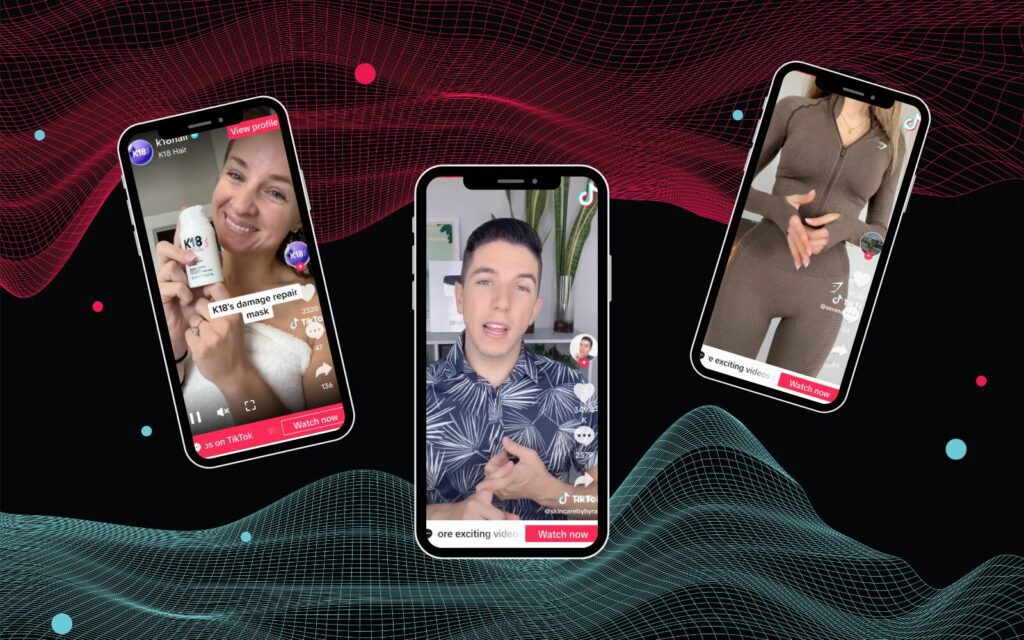
What they did right
- Gymshark built a strong community of creators who showcased workouts, transformations and lifestyle content, which created a consistent stream of engaging posts.
- CeraVe leaned into education and trust: skincare routines, real users, trusted voices. They turned TikTok content into a direct driver for product discovery.
- Both aligned with the TikTok shopping ecosystem – making it easy for users to go from discovery to purchase.
Key outcomes & takeaway
These brands show that TikTok isn’t just for “fun viral videos” it can be a conversion engine if programmed right. For brands aiming for commerce: combine community-rich content, educational/valuable messaging, and seamless shopping links. It’s not enough to go viral; you need to channel the momentum into actionable steps.
H2 + Luxury Brands & Creator Dynamics
Luxury brands historically lagged social platforms built for “mass” culture. However, according to research, luxury houses like Dior, Gucci and Prada grew their media impact value (MIV) on TikTok by 11 % in H1 2023, outpacing fast fashion’s 7 % growth.

What they did right
- They worked with creators who brought cultural relevance, not just luxury branding – for example older creators doing unboxing, streetwear meets couture.
- They capitalised on TikTok’s algorithm by making short-form, trend-adapted content rather than repurposing long-form ads.
- They blended aspirational aesthetics with relatable voices.
- Notably they leaned into influencer-led content: for luxury, nearly 70 % of media impact value came via creator content.
Key outcomes & takeaway
Even premium brands can succeed on TikTok by shifting their mindset: from “luxury elite message” to “culture-driven story”. The takeaway: align luxury storytelling with creator creativity and the platform’s native style.
Synthesising the Key Lessons
Here are the recurring themes that emerge from the above case studies and research:
1. Authentic creator relationships matter
Brands that maintain high creator retention (≥25 % of creators posting about the brand for 12 months+) perform better.
Partner with creators who genuinely like your product, and give them the freedom to create in the platform’s native voice.
2. Entertainment first, product second
Platforms like TikTok reward content that feels like entertainment more than an ad. As one article put it: “Don’t make ads, make TikToks.”
If the content doesn’t entertain or spark interest in the first 2–3 seconds, it likely won’t win.
3. Platform-native formats & trends
Vertical video, trending sounds, memes, quick cuts: these are core to TikTok. Brands must adopt these instead of shoe-horning older formats.
Also: sometimes starting a trend (rather than joining one) can yield strong results e.g., Duolingo creating its own voice.
4. Align content with business objectives
Whether it’s awareness (Duolingo), brand building (Rare Beauty), community commerce (Gymshark), or luxury positioning (Dior) – you need a clear objective. Each of the brands above did not treat TikTok as an afterthought.
Use metrics: engagement, views, creator-driven posts, conversion links.
5. Make the experience shoppable/exportable
Especially for e-commerce brands, integrating TikTok Shop or linking to landing pages helps capitalise on momentum.
Even for non-commerce brands, linking back to website or app downloads or product trials is essential.
6. Build for longevity
It’s not just about one viral hit. Brands that succeed plan for the long-term: regular content, consistent creator collaboration, evolving with new trends and audience habits.
Brands that mimic a one-off campaign and then vanish often lose momentum.
Conclusion & Forward Outlook
TikTok is no longer a fringe channel it’s a core platform for brands that want attention, engagement and growth especially among Gen Z and Millennials. The brands that cracked TikTok treat it not as an ad distribution channel but as a cultural platform.
As we move into 2025 and beyond, three actionable takeaways:
- Start now: Trends evolve quickly delay means your brand may look reactive rather than native.
- Invest in creators and culture: Authentic voices matter more than high-budget production.
- Measure and tie to business goals: Whether it’s downloads, product sales or brand awareness track it.
Brands that treat TikTok as a strategic channel, integrate with their marketing and keep content fresh will continue to reap rewards.
Looking ahead, expect more innovation: live-shopping, augmented reality effects, regional localized trends and deeper commerce integration. Brands that stay agile will continue to win.



